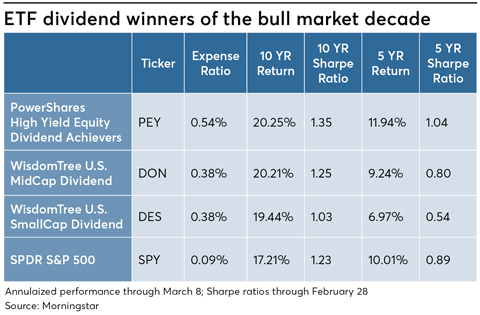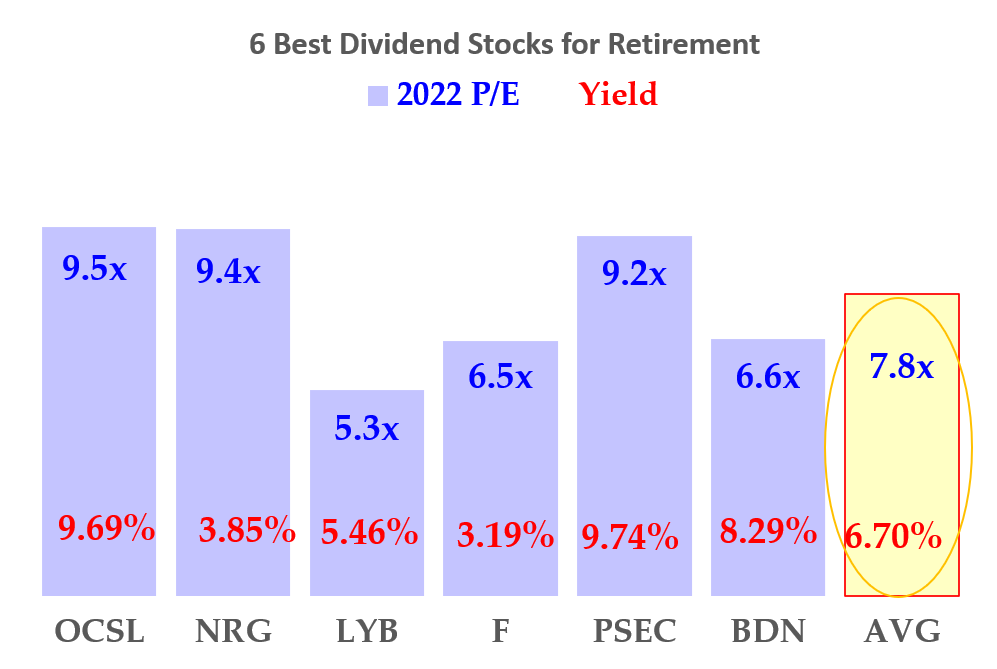
What is asset allocation? It is simply the process of allocating your money among different asset classes. This includes stocks, bonds and cash. This complex method of allocating your money requires careful consideration. Once you've determined what risks you are comfortable taking, it is possible to start dividing your money accordingly. Learn more. Hopefully this article will answer your question.
Asset allocation is the process of divvying-up your money among some - or all - of the asset classes of stocks, bonds, cash and other secondary asset classes
As an investor, you might be wondering how to allocate your funds in a way that helps you achieve your financial goals. Because asset allocation involves balancing risk with reward, the answer will depend on your individual situation. An investor may wish to invest in multiple asset types, with the proportions depending on their risk tolerance, time horizon and investment goals.

It is based on your risk tolerance
Your risk tolerance may be higher or lower depending on your financial security and age. A high tolerance for risk would allow you to invest more in bonds and stocks while being less concerned about losing your money. Low risk tolerance means that you would invest less in bonds and stocks, but would still have more of each. Risk tolerance is an important factor to consider when choosing an investment.
It isn't a one-time fix-it-and-forget process
Your portfolio may have too many or too few assets. You need to adjust your allocations regularly in order for them to meet your future needs. If you have any questions, a financial advisor can help you. Asset allocation can be done in many ways. The best one for you depends on your risk tolerance and individual situation.
It's a complicated process
Asset allocation refers to the division of your investment dollars among different types of assets on the market. These types of assets can be classified as stocks, bonds, or cash. While there are other types of assets that may be suitable, stocks, bonds and cash are the most commonly used. Asset allocation has two main goals: to minimize volatility and maximize return. Your investment goals, risk tolerance, investment horizon and personal goals will all influence the distribution of your portfolio. These factors can differ from person to person so it is important to understand how your strategy will be affected by them.
It is a crucial component of any investment plan
Asset allocation is a strategy that divides your investments between different types of assets in order to minimize your risk and maximize your returns. Asset allocation is a way to take into consideration your time horizon and risk tolerance in order determine the appropriate amount of each type. You can also account for unexpected expenses. These are the basics of asset allocation.

It can have a negative impact on your portfolio's performance
It is important to understand how to best allocate your assets in order to maximize your return relative the risk you are willing to take. An efficient asset allocation strategy uses a blend of assets to reduce risk and increase return. This is possible by using mutual funds and ETFs. Asset allocation can also provide diversification. ETFs are a great way to diversify while keeping your focus on specific stocks.
FAQ
What is the purpose of the Securities and Exchange Commission
Securities exchanges, broker-dealers and investment companies are all regulated by the SEC. It enforces federal securities regulations.
What is the difference in a broker and financial advisor?
Brokers specialize in helping people and businesses sell and buy stocks and other securities. They manage all paperwork.
Financial advisors are experts on personal finances. They help clients plan for retirement and prepare for emergency situations to reach their financial goals.
Banks, insurance companies and other institutions may employ financial advisors. They may also work as independent professionals for a fee.
If you want to start a career in the financial services industry, you should consider taking classes in finance, accounting, and marketing. Also, you'll need to learn about different types of investments.
Why is a stock called security.
Security is an investment instrument whose value depends on another company. It may be issued either by a corporation (e.g. stocks), government (e.g. bond), or any other entity (e.g. preferred stock). The issuer can promise to pay dividends or repay creditors any debts owed, and to return capital to investors in the event that the underlying assets lose value.
What is a fund mutual?
Mutual funds are pools of money invested in securities. They provide diversification so that all types of investments are represented in the pool. This reduces the risk.
Managers who oversee mutual funds' investment decisions are professionals. Some funds also allow investors to manage their own portfolios.
Mutual funds are preferable to individual stocks for their simplicity and lower risk.
How do I choose an investment company that is good?
Look for one that charges competitive fees, offers high-quality management and has a diverse portfolio. The type of security that is held in your account usually determines the fee. Some companies charge no fees for holding cash and others charge a flat fee per year regardless of the amount you deposit. Others may charge a percentage or your entire assets.
It's also worth checking out their performance record. A company with a poor track record may not be suitable for your needs. You want to avoid companies with low net asset value (NAV) and those with very volatile NAVs.
Finally, it is important to review their investment philosophy. An investment company should be willing to take risks in order to achieve higher returns. If they are not willing to take on risks, they might not be able achieve your expectations.
What is a "bond"?
A bond agreement between two people where money is transferred to purchase goods or services. It is also known simply as a contract.
A bond is typically written on paper and signed between the parties. This document includes details like the date, amount due, interest rate, and so on.
A bond is used to cover risks, such as when a business goes bust or someone makes a mistake.
Bonds are often used together with other types of loans, such as mortgages. The borrower will have to repay the loan and pay any interest.
Bonds are used to raise capital for large-scale projects like hospitals, bridges, roads, etc.
A bond becomes due upon maturity. This means that the bond's owner will be paid the principal and any interest.
Lenders are responsible for paying back any unpaid bonds.
Statistics
- Ratchet down that 10% if you don't yet have a healthy emergency fund and 10% to 15% of your income funneled into a retirement savings account. (nerdwallet.com)
- US resident who opens a new IBKR Pro individual or joint account receives a 0.25% rate reduction on margin loans. (nerdwallet.com)
- For instance, an individual or entity that owns 100,000 shares of a company with one million outstanding shares would have a 10% ownership stake. (investopedia.com)
- Even if you find talent for trading stocks, allocating more than 10% of your portfolio to an individual stock can expose your savings to too much volatility. (nerdwallet.com)
External Links
How To
How to open a Trading Account
First, open a brokerage account. There are many brokers available, each offering different services. There are some that charge fees, while others don't. Etrade (TD Ameritrade), Fidelity Schwab, Scottrade and Interactive Brokers are the most popular brokerages.
Once your account has been opened, you will need to choose which type of account to open. These are the options you should choose:
-
Individual Retirement Accounts (IRAs)
-
Roth Individual Retirement Accounts
-
401(k)s
-
403(b)s
-
SIMPLE IRAs
-
SEP IRAs
-
SIMPLE 401K
Each option offers different benefits. IRA accounts offer tax advantages, but they require more paperwork than the other options. Roth IRAs allow investors deductions from their taxable income. However, they can't be used to withdraw funds. SIMPLE IRAs have SEP IRAs. However, they can also be funded by employer matching dollars. SIMPLE IRAs have a simple setup and are easy to maintain. They allow employees to contribute pre-tax dollars and receive matching contributions from employers.
Next, decide how much money to invest. This is known as your initial deposit. A majority of brokers will offer you a range depending on the return you desire. A range of deposits could be offered, for example, $5,000-$10,000, depending on your rate of return. This range includes a conservative approach and a risky one.
Once you have decided on the type account you want, it is time to decide how much you want to invest. Each broker has minimum amounts that you must invest. The minimum amounts you must invest vary among brokers. Make sure to check with each broker.
After choosing the type account that suits your needs and the amount you are willing to invest, you can choose a broker. You should look at the following factors before selecting a broker:
-
Fees-Ensure that fees are transparent and reasonable. Many brokers will offer trades for free or rebates in order to hide their fees. However, many brokers increase their fees after your first trade. Be cautious of brokers who try to scam you into paying additional fees.
-
Customer service: Look out for customer service representatives with knowledge about the product and who can answer questions quickly.
-
Security - Look for a broker who offers security features like multi-signature technology or two-factor authentication.
-
Mobile apps - Find out if your broker offers mobile apps to allow you to view your portfolio anywhere, anytime from your smartphone.
-
Social media presence – Find out if your broker is active on social media. If they don’t, it may be time to move.
-
Technology - Does the broker utilize cutting-edge technology Is the trading platform user-friendly? Are there any issues when using the platform?
After choosing a broker you will need to sign up for an Account. Some brokers offer free trials while others require you to pay a fee. After signing up, you will need to confirm email address, phone number and password. Then, you'll be asked to provide personal information such as your name, date of birth, and social security number. You'll need to provide proof of identity to verify your identity.
Once verified, your new brokerage firm will begin sending you emails. These emails will contain important information about the account. It is crucial that you read them carefully. This will include information such as which assets can be bought and sold, what types of transactions are available and the associated fees. Also, keep track of any special promotions that your broker sends out. These could be referral bonuses, contests or even free trades.
The next step is to open an online account. An online account is typically opened via a third-party site like TradeStation and Interactive Brokers. These websites are excellent resources for beginners. When you open an account, you will usually need to provide your full address, telephone number, email address, as well as other information. After you submit this information, you will receive an activation code. This code will allow you to log in to your account and complete the process.
After opening an account, it's time to invest!